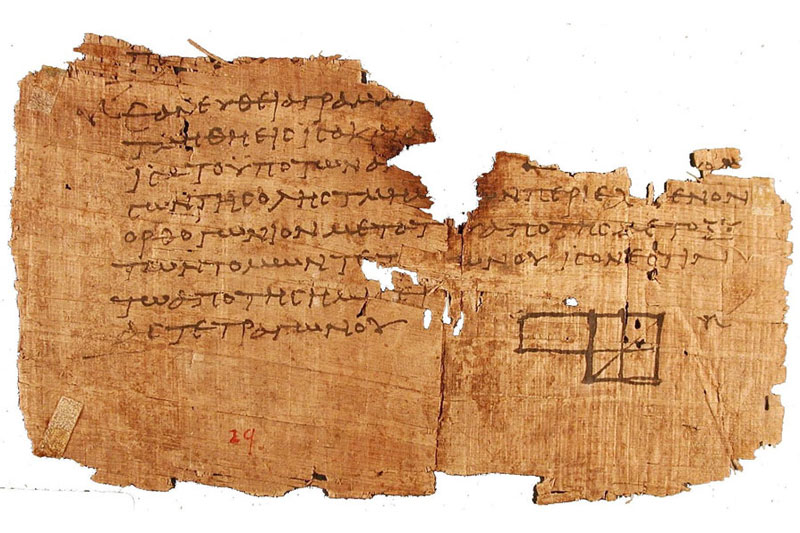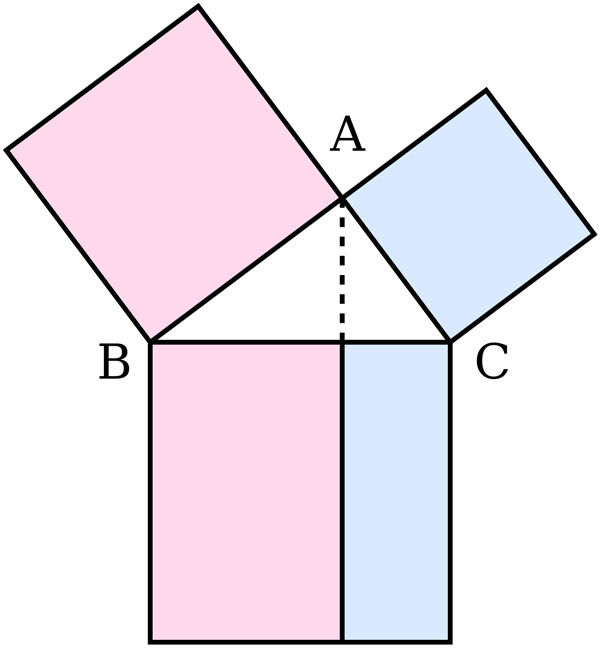Built upon the foundation laid by the operative Masons, Freemasonry and geometry are inextricably linked. Stonemasonry harmoniously unites rationality and creativity, allowing the most skilled craftsmen to wield mathematics and imagination to create awe-inspiring structures. When we come to understand and apply geometric law, the patterns and forms of nature reveal themselves, and so we see the brilliance of the Grand Architect’s creation.
By the time a candidate becomes a Master Mason, he will have encountered several geometric applications and symbols, including the square and the compasses. The 3: 4: 5 right triangle is among these essential symbols, demonstrating Euclid’s 47th Problem. Euclid’s proof is illustrated in the third degree, emphasizing that Masons should appreciate the arts and sciences. Every cipher in Freemasonry enjoys a rich history and more profound significance, and the 47th Problem is no different. To understand how this symbol came to be, let us first learn about the man behind the geometric law.
The Father of Geometry
Little is known about the life of Euclid, including his appearance or lifestyle. As such, any rendering of him is the work of artistic imagination. We know that he was a Greek mathematician who lived in Egypt around 300 BCE. He earned his moniker “Father of Geometry” for writing one of the most influential mathematical textbooks in all of history: the “Stoicheion” or Elements.

One of the oldest surviving fragments of Euclid’s Elements, circa AD 100
Through Elements, Euclid captured much of the mathematical achievements of ancient Greece. Building upon his predecessors, such as the great Pythagoras, the tome served as the primary textbook for teaching mathematics (especially geometry) for over 2,000 years. It is a collection of definitions, postulates, propositions, and mathematical proofs. The text was so important that it was among the first mathematical works printed via the printing press in 1482. It is estimated to trail only the Bible in editions published since its initial printing.
Euclid’s Proof
Euclid’s Elements present many groundbreaking mathematical principles, including that of Proposition 47 in Book 1. Also known as Euclid’s 47th Problem, or the Pythagorean Theorem, establishes that in any right triangle, the square of the two sides connected to the right angle is equal to the square of the third side called the hypotenuse.

Proof in Euclid’s Elements
This principle, which states that the angle formed by the 3: 4: 5 triangle is invariably square and perfect, is foundational to all measurement systems to this day. It comes to life when determining which computer size to buy, measuring the space for your new TV, and using a ladder. Even if you don’t have a strong knowledge of geometry, you have likely used this theorem.
For architects and craftsmen, this knowledge is invaluable. Operative Masons created this triangle using a length of rope divided into 12 equal segments. This rope allowed them to create a right angle quickly and accurately as a template for the Mason’s square. Understanding how to form a perfect square is of the utmost importance in stonemasonry. In antiquity, when expertise was limited to the few, it may have been one of the genuine secrets of a Master Mason.
The 47th Problem & Freemasonry
While vital to the evolution from stonemasonry to Freemasonry, complex geometric science is only lightly touched upon in the three degrees. Geometry and its 47th Problem is one of the liberal arts and sciences which tend to polish and adorn our mental faculties. It symbolizes man’s ability to build a perfect, right angled square. That square, as a symbol, appears in the Entered Apprentice degree as one of the immovable jewels of the lodge, the badge of the Worshipful Master, and a lesson in morality. It appears in the Fellow Craft degree in our definition of speculative freemasonry, which was passed down through generations from England’s William Preston to Ohio’s founding freemasons. It also appears in the ceremony of installation, during which we are taught that “the square teaches us to regulate our actions by rule and line, and to harmonize our conduct by the principles of morality and virtue.”
As Freemasons, we always seek to better ourselves, an endeavor requiring reverence for the perfection of nature and the manifestations of geometry in the world around us. As with all symbols in our rituals, Euclid’s 47th Problem should inspire a Mason to work on his craft to find greater light in Freemasonry and become the best version of himself.
Want to learn about other Masonic symbols and imagery? Read our blogs on The Masonic Pillars, Jacob’s Ladder, and The Eye of Providence.